- It was the original eco-car, the green warrior leading the way
- Impressive fuel efficiency
- Actually fun to drive!
- Come 2022, it was outdated and outdone by other Toyota hybrids
- Expensive to buy
- Not that well equipped
Once upon a time, Toyota set-out to make a car with untouchable eco credentials, a car which married the the future of electric mobility with the humble petrol powered engine. That car, was the Toyota Prius, the icon eco-car and the very genesis of the automotive industry trying to make itself a little greener. In many ways, the Prius paved the way for Toyota’s electrification strategy, ushering in hybrid models of almost every Toyota on sale today. Come 2022 though, and ironically, the Prius was starting to feel old and almost forgotten. We tested the 2022 Toyota Prius to see how this last hurrah stood up compared with competition.
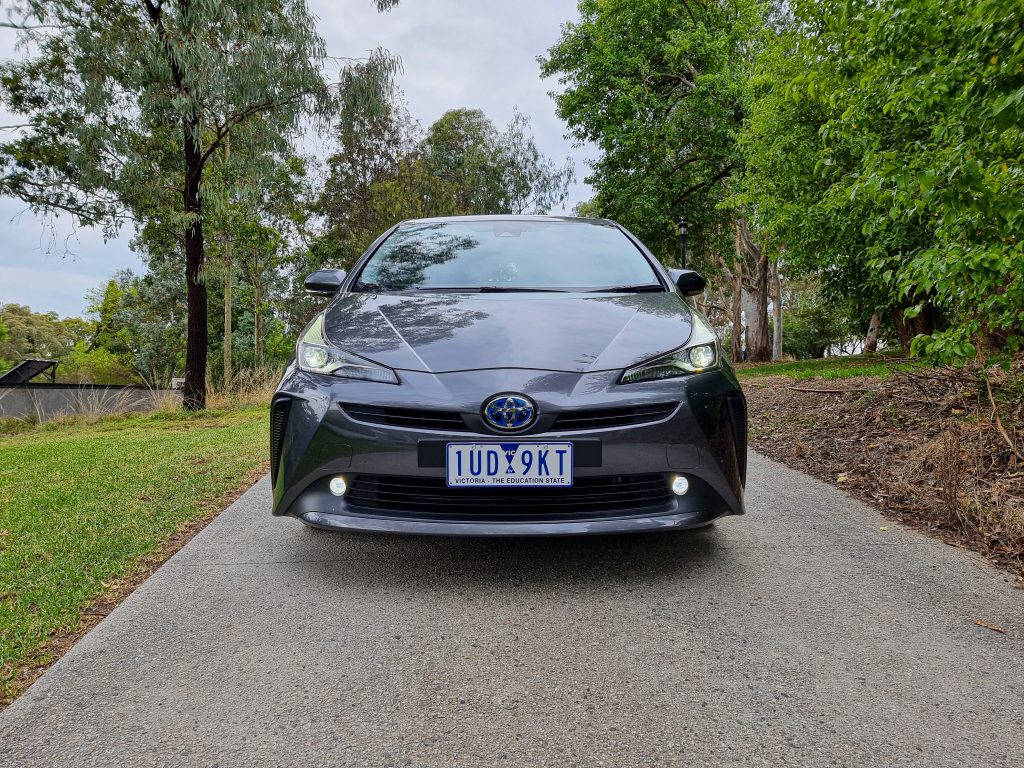
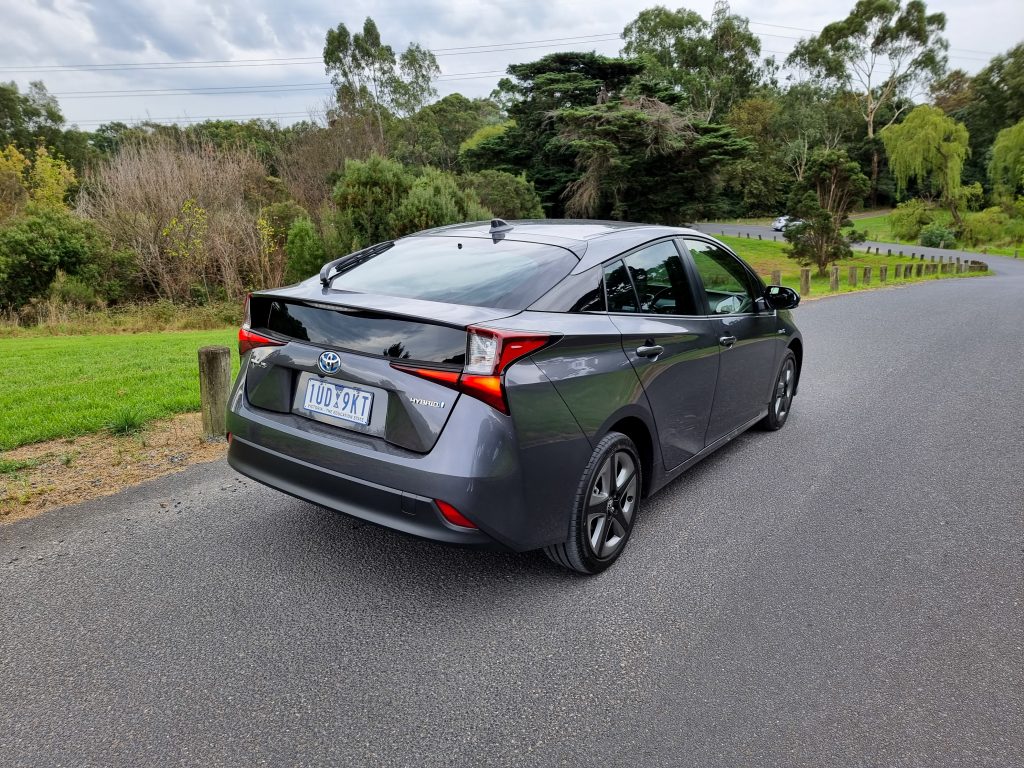
In mid-2022, Toyota Australia announced the end of the road for the Prius following its successful stint as Australia’s pioneering eco-warrior. Since its launch in October 2001, Toyota has sold 20,847 examples of the Prius, highlighting the success of the nameplate. There is no doubting the Prius legacy cemented the public’s perception of Toyota as the hybrid expert, bringing the technology to multiple model lines, such as the Corolla, Corolla Cross, Camry, RAV4, Kluger, C-HR, Yaris and Yaris Cross.
The last Prius to go on sale in Australia was the the fourth-generation version launched in 2016. Back then, Toyota claimed the Prius was even more efficient than before, and crucially thanks to its new TNGA platform, much better to drive. With the Prius era now over, what was this last Prius to be sold in Australia like? Time to find out.
Price & Equipment: 5/10
When the Prius bowed out in 2022, Toyota had a two-tier Prius range which kicked off from $37,890 before on-road costs, with the up-spec i-Tech on test here priced from $45,350 before on-roads. A drive-away price of around $50,000 could be expected.
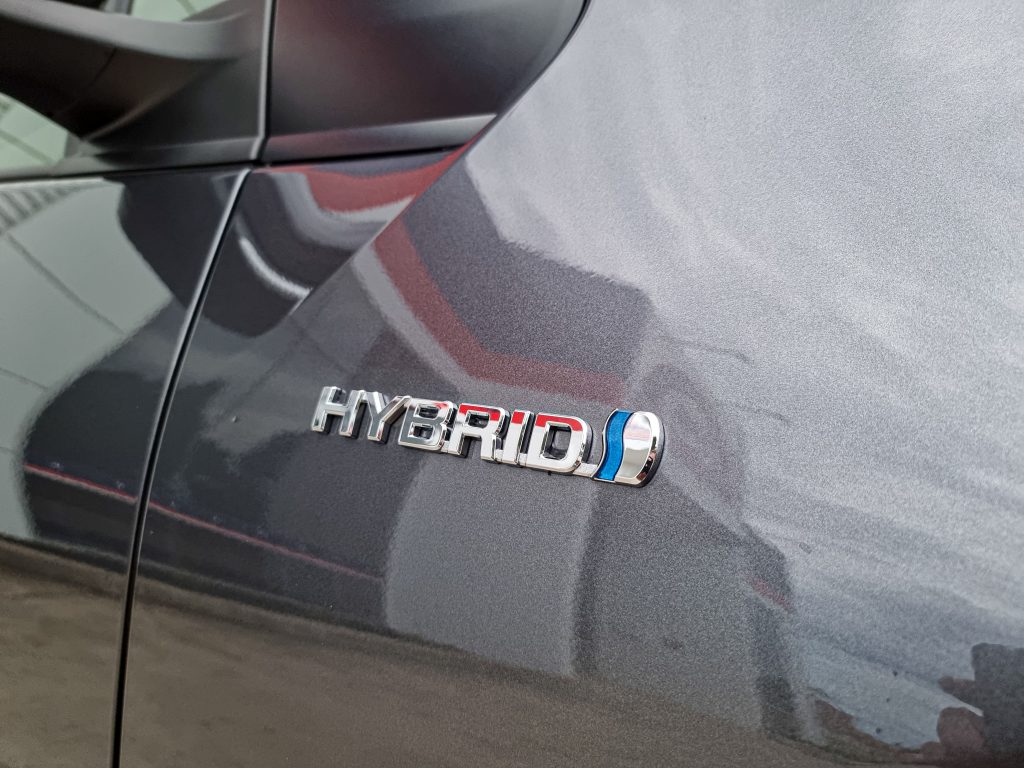
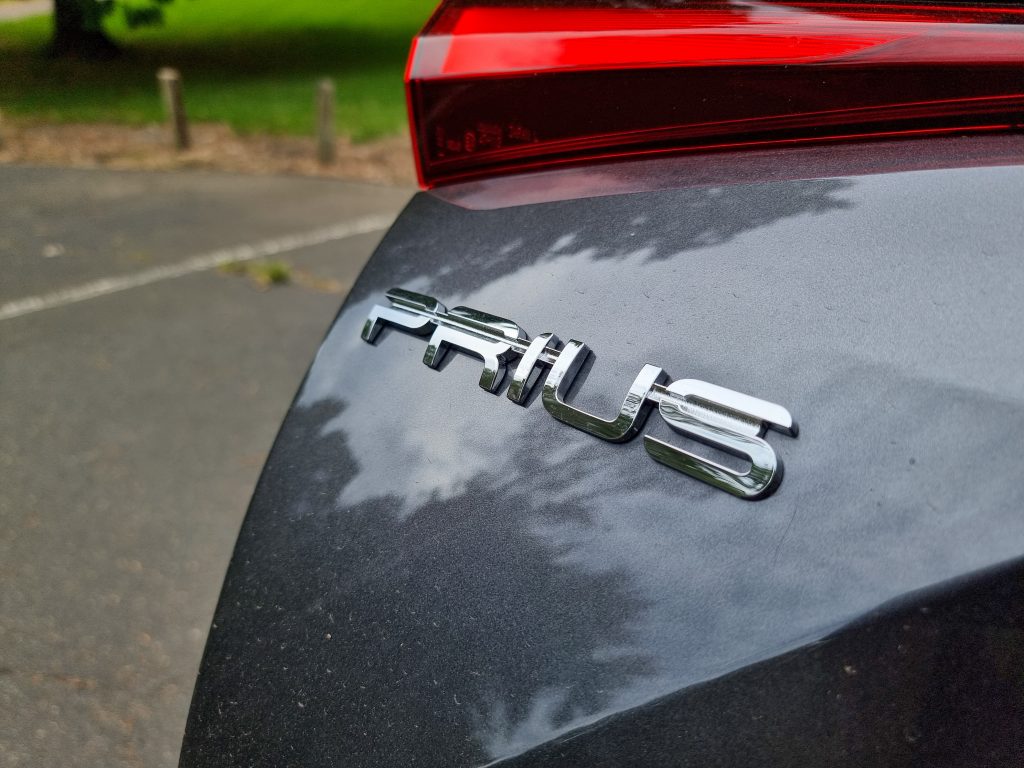
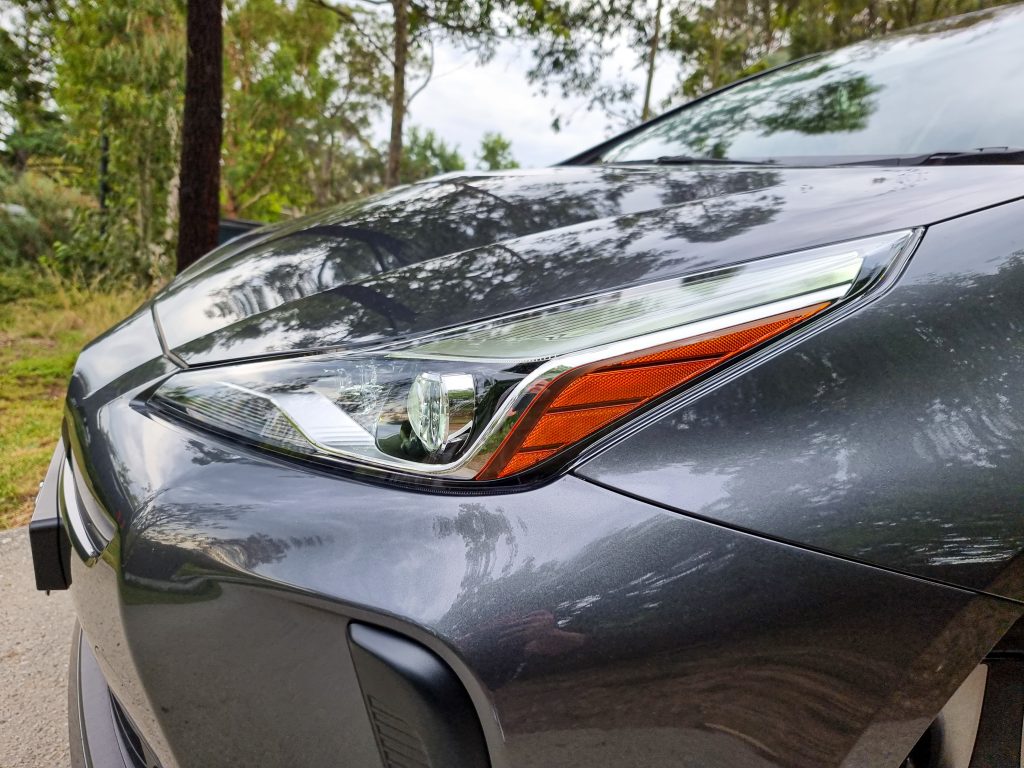
For that money, the top of the range 2022 Toyota Prius came pretty well equipped with aero-optimised 17-inch alloy wheels, LED headlights and tail lights, front fog lights, tinted windows, auto wipers and lights, an auto dimming rear view mirror, keyless entry with push-button start, leather upholstery with front heated seats, adaptive cruise control, a centrally mounted 7.0-inch touchscreen infotainment system with Apple CarPlay, Android Auto and satellite navigation, a 10 speaker premium JBL sound system and a heads up display.
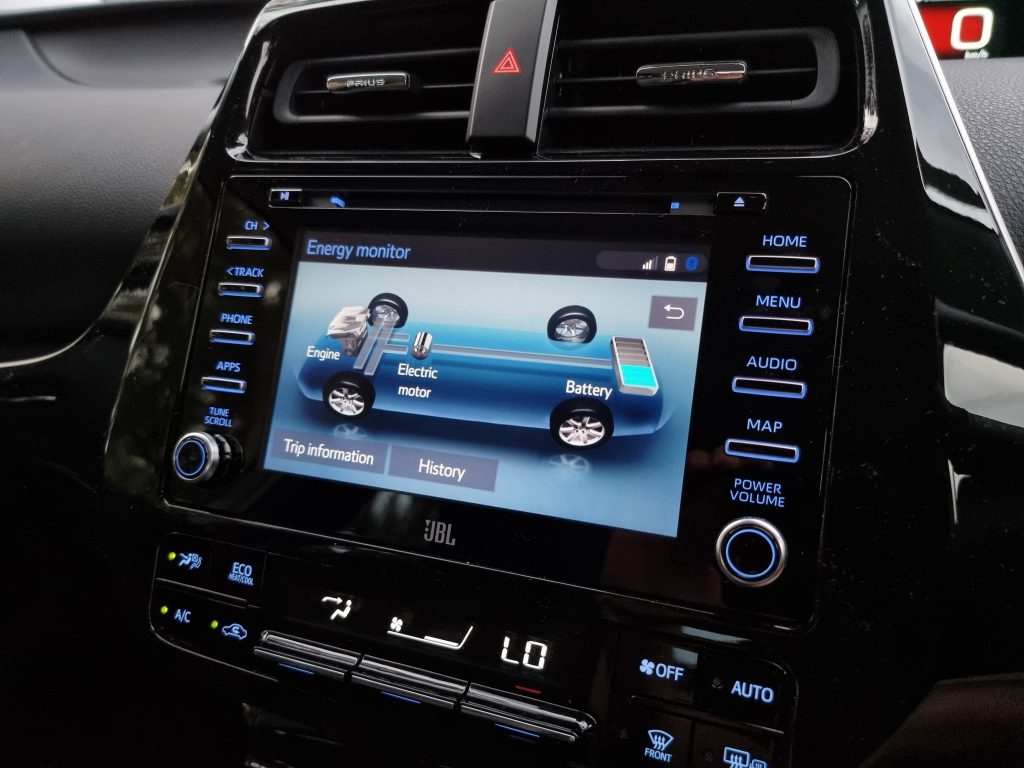
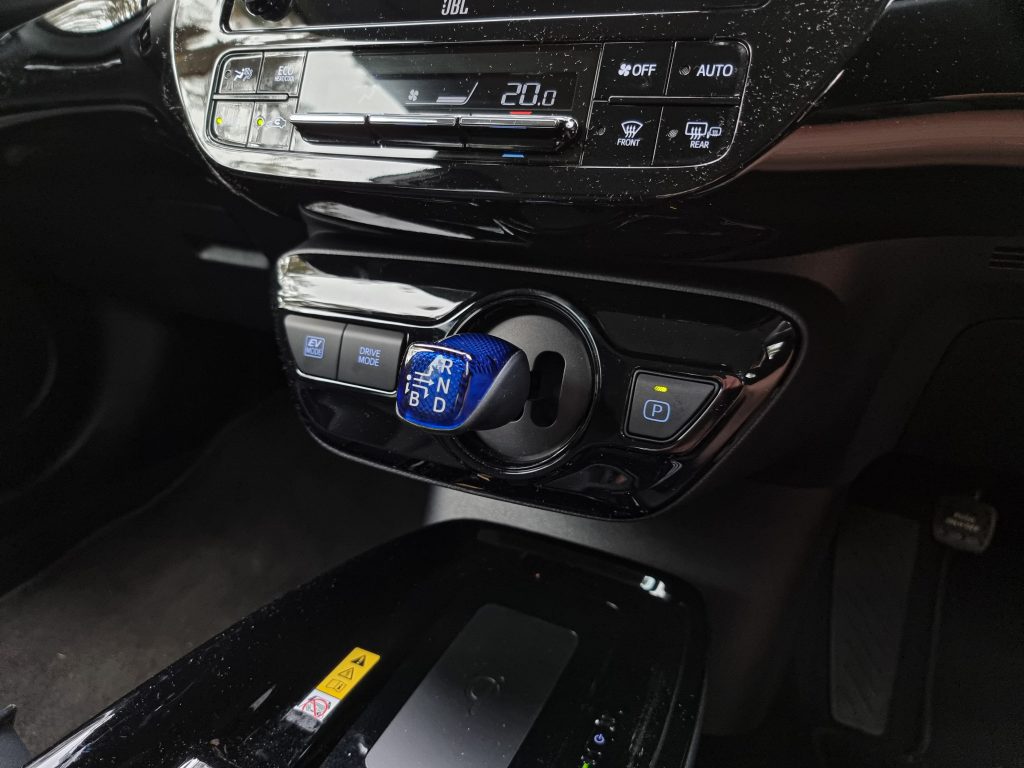
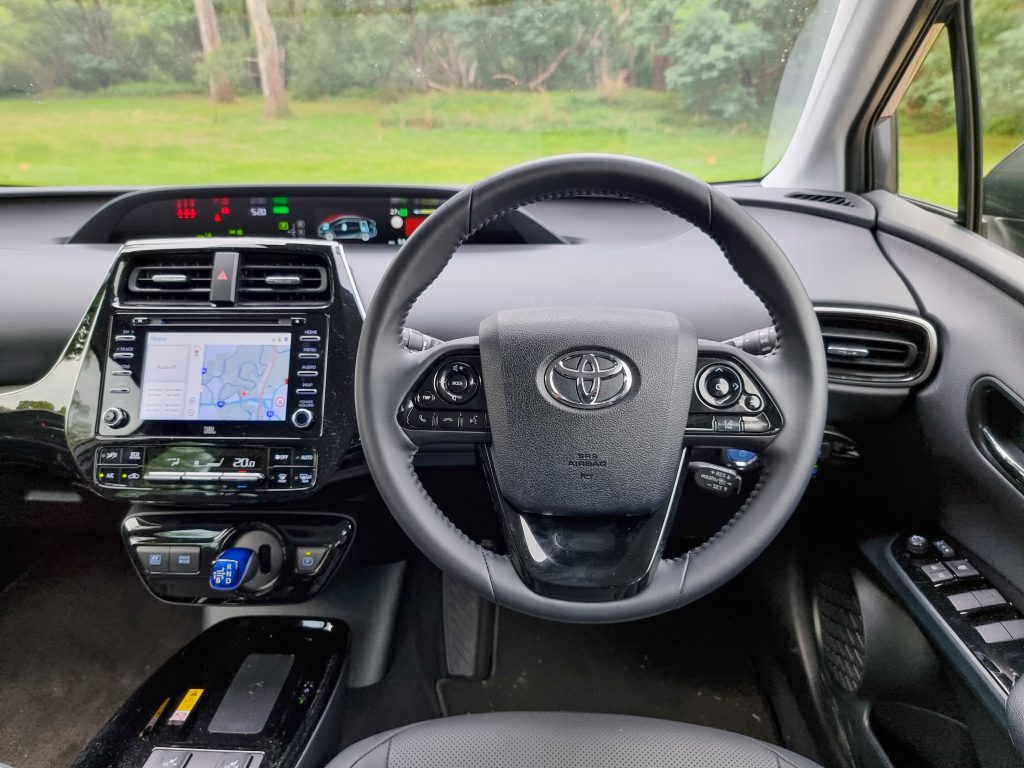
On the safety front, all Priuses came with front, side and curtain airbags, along with a driver knee airbag. Active safety measures designed to prevent accidents from happening include autonomous emergency braking, lane-keep assist, blind-spot monitoring and rear cross-traffic alert. Back in 2016, the Prius was awarded a 5-star ANCAP safety rating.
Buying the 2022 Toyota Prius was an expensive affair when it was still on sale last year, being more expensive that the range-topping Corolla ZR Hybrid at $34,695 and matching the RAV4 Cruiser AWD Hybrid, a much larger, newer and better value for money SUV. Sadly, the Prius just wasn’t very good value for money when it bowed out, with its appeal further marred thanks to the numerous other newer Toyota hybrids on sale.
Performance & Economy: 8/10
With all Toyota Prius models proudly wearing a hybrid badge, there’s no doubt that a petrol engine is working in tandem with electricity under the bonnet. The Prius was powered by a 1.8-litre naturally-aspirated four-cylinder petrol engine producing 72kW of power and 142Nm of torque with an electric motor and a 1.3kWh nickel-metal hydride battery. Combined peak power is 90kW, and Toyota doesn’t quote a combined peak torque figure.
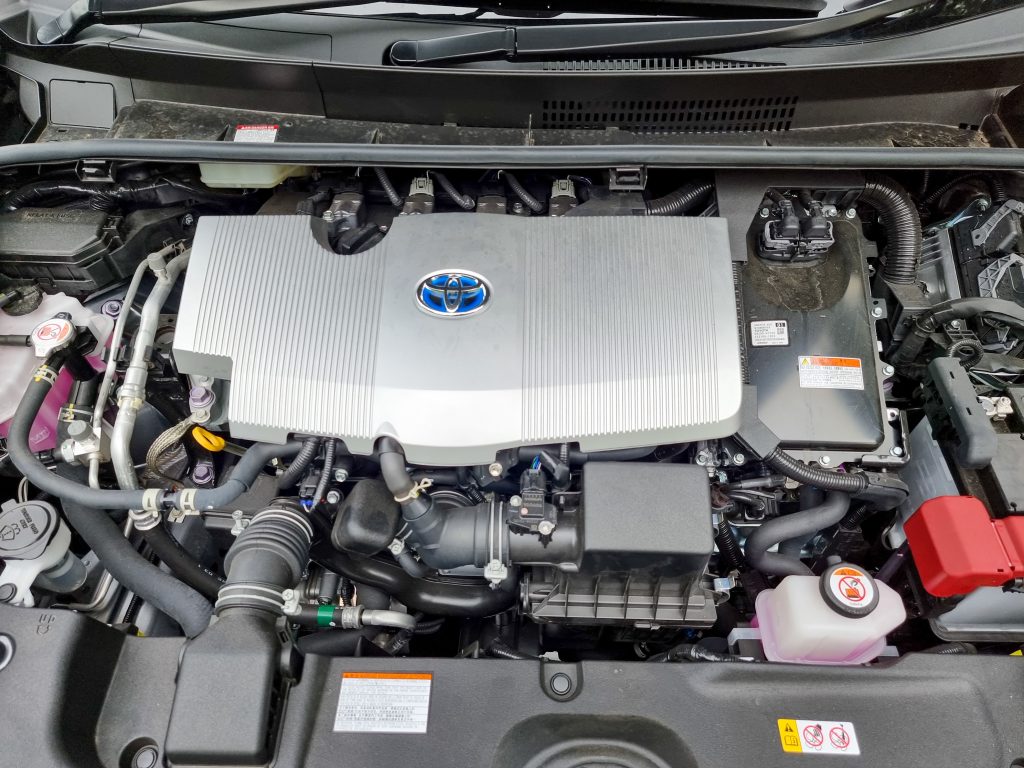
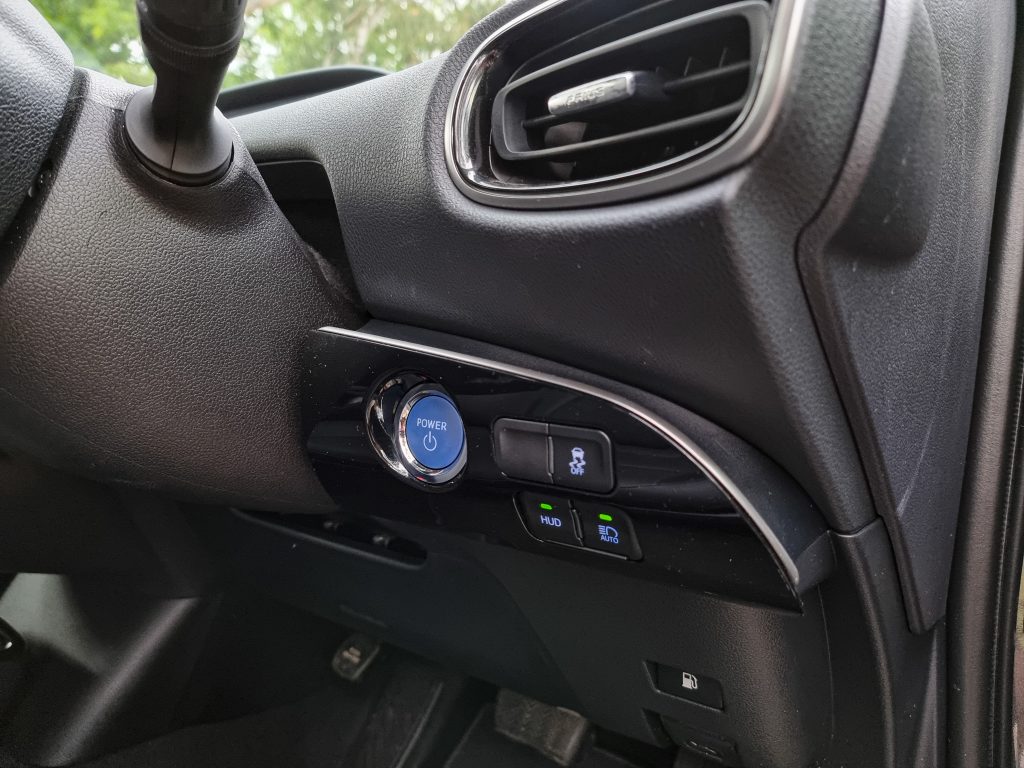
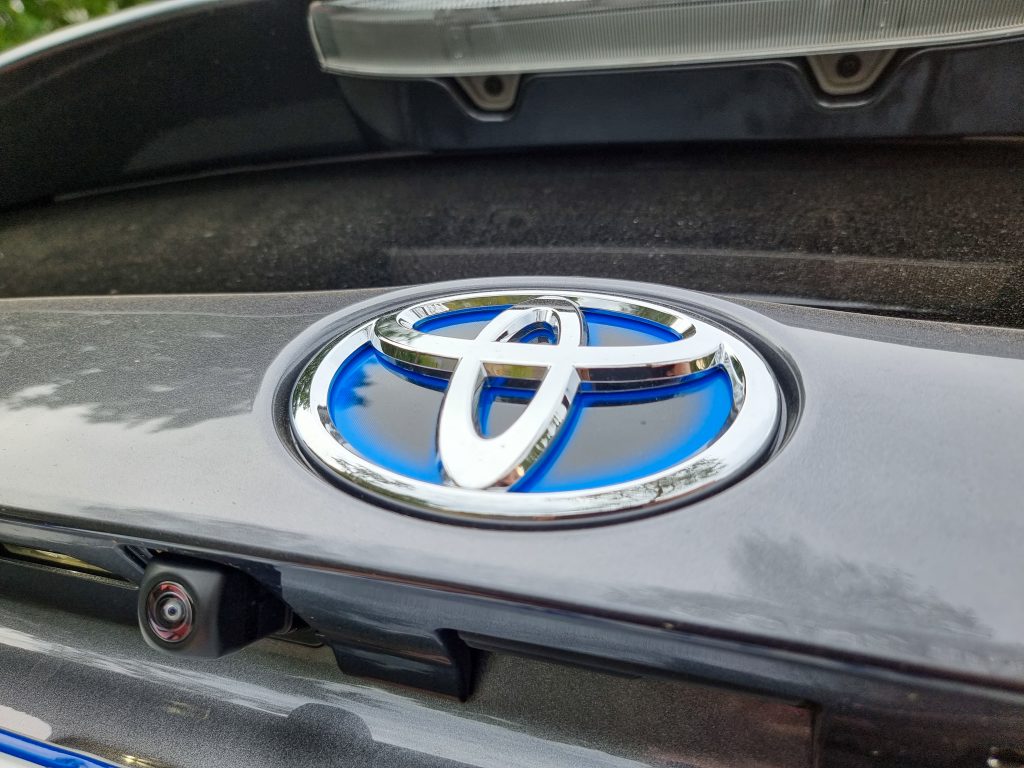
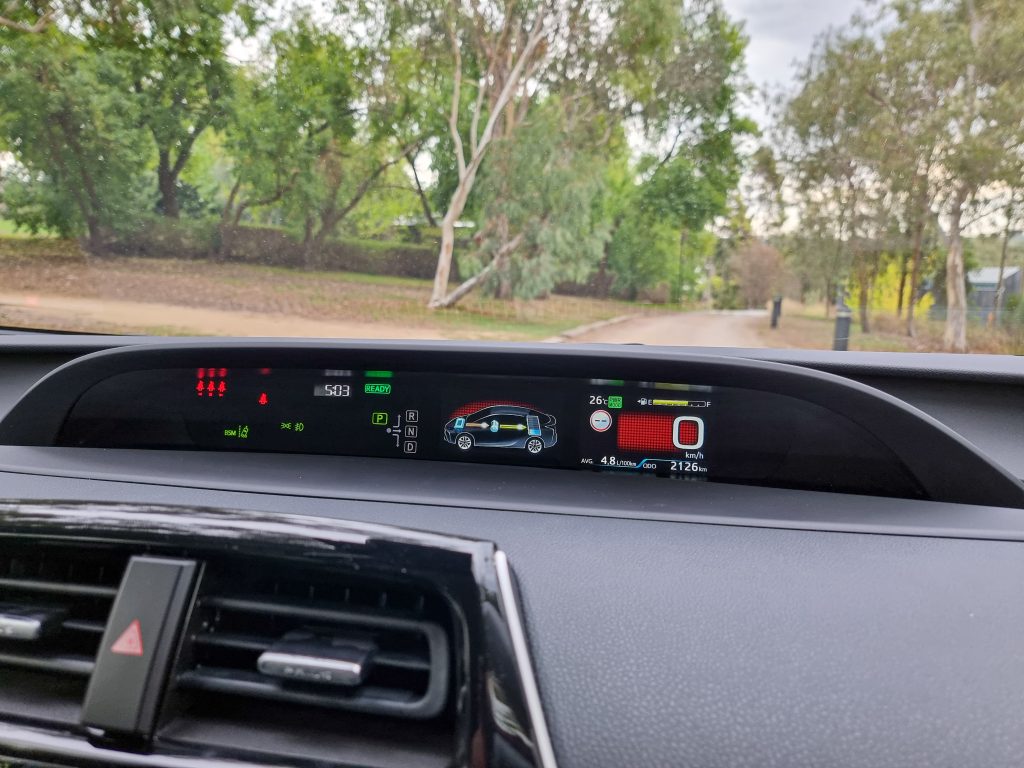
The hybrid system might not be anything new by today’s standards, but it kept true to Toyota’s uncanny ability to make petrol and electric power work together hand in hand. The Prius moves off silently under electric power, and when more acceleration is demanded, the 1.8-litre engine does kick in, rather smoothly and quietly. It all just worked cohesively, and beautifully. For so many years, no other manufacturer was capable of coming close to the tech Toyota had built, and in turn few cars could match the Prius’ efficiency over the years, especially around town.
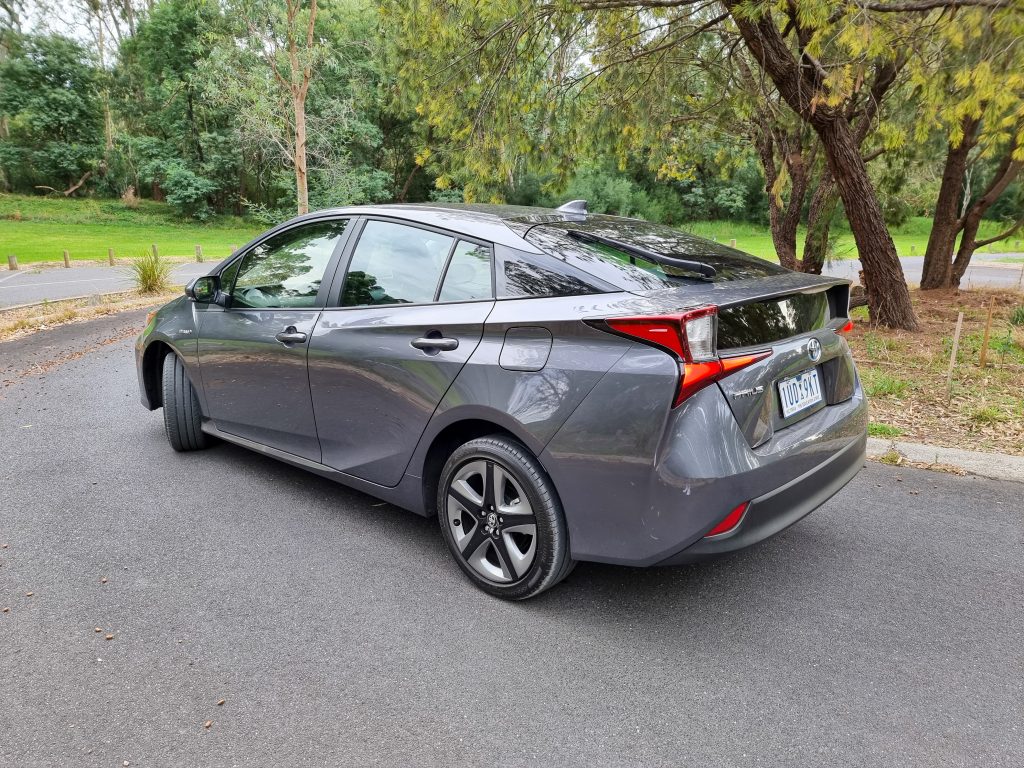
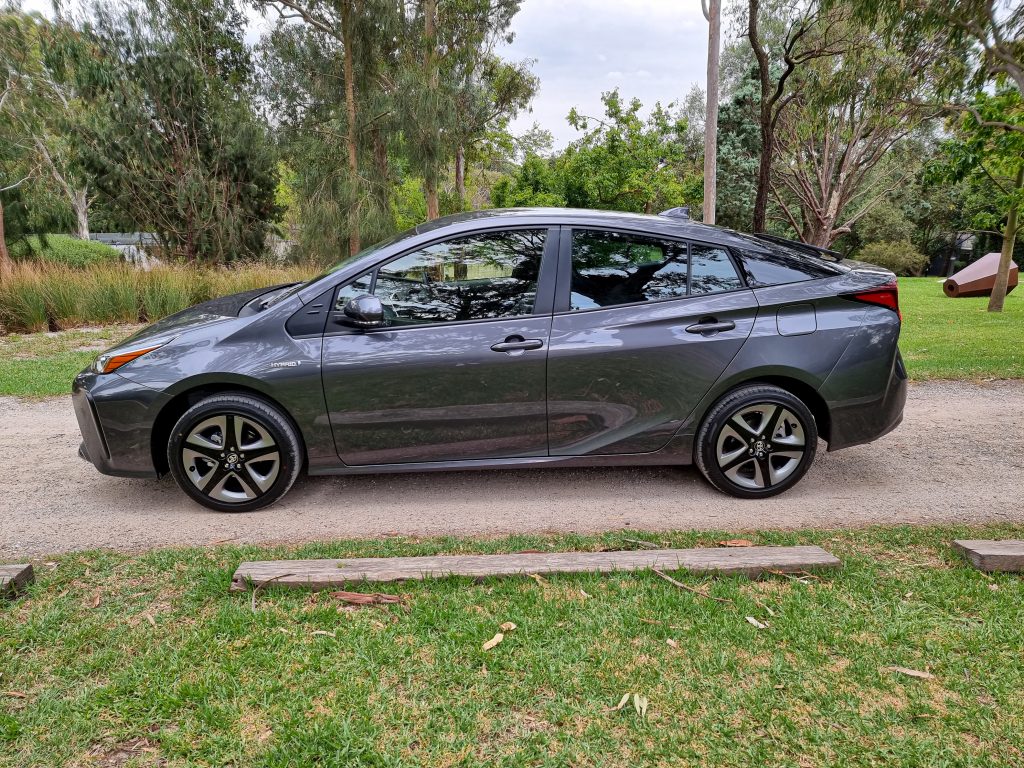
The Prius had a claimed fuel economy figure of 3.4 litres per 100km. Rather impressive. During city driving we would often see around 4.0L/100km, with this figure rising into the mid 4L/100km mark during some faster driving. The Prius did have an “EV-mode” but in reality, it really doesn’t have any real electric-only range. Instead the battery and electric motors work to supplement the petrol engine when accelerating and then work to capture energy which would have been lost through braking. Such a simple concept, yet one capable of making real gains in efficiency, without the need to charge the Prius at all.
Ride & Handling: 8/10
The Prius might have always been the butt of jokes coming from car enthusiasts on account of its dowdy image, but Toyota really stepped things up with this last generation to go on sale in Australia, making the car much better to drive than before. The Prius handled and steered well, with the prevailing sense that someone designed it with the words “driving” and “fun” in mind. Sure, it had some skinny eco tyres which weren’t the last word in grip, but it felt connected behind the wheel, changed direction keenly and had some talent not previously seen in older Prius models.
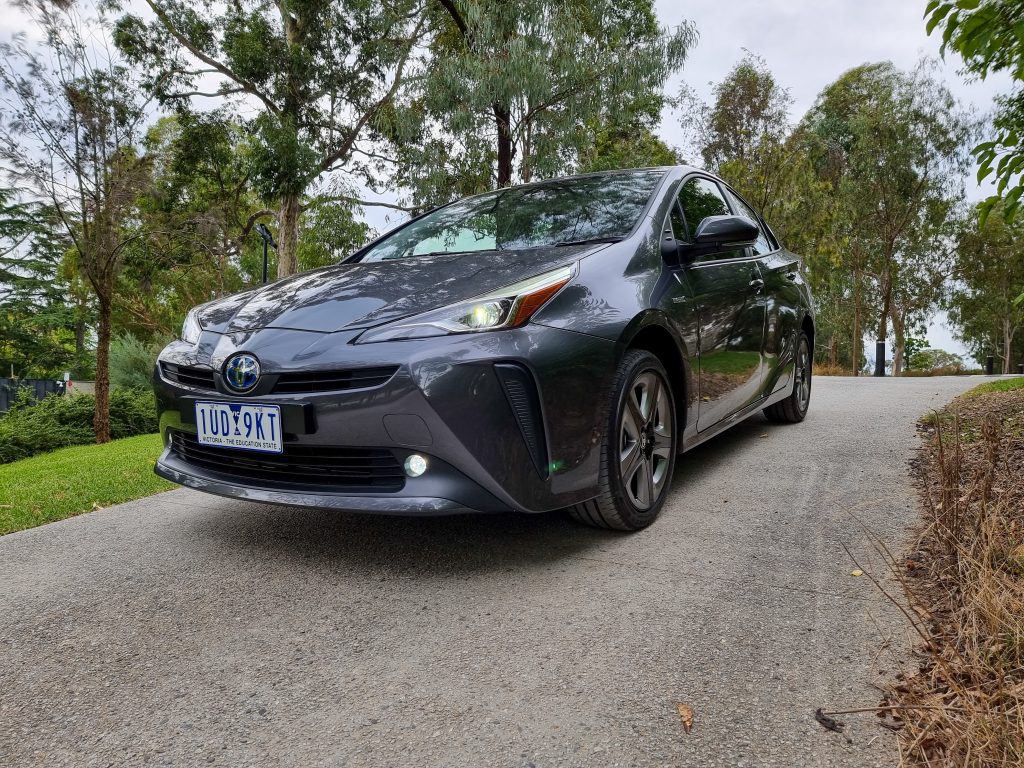
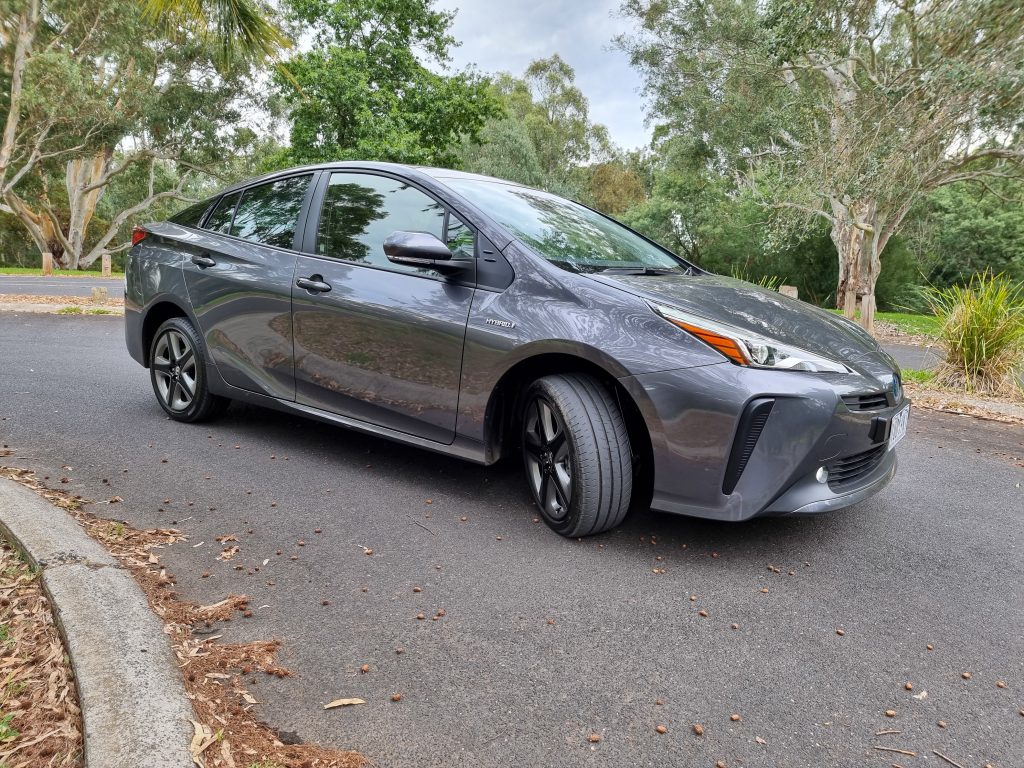
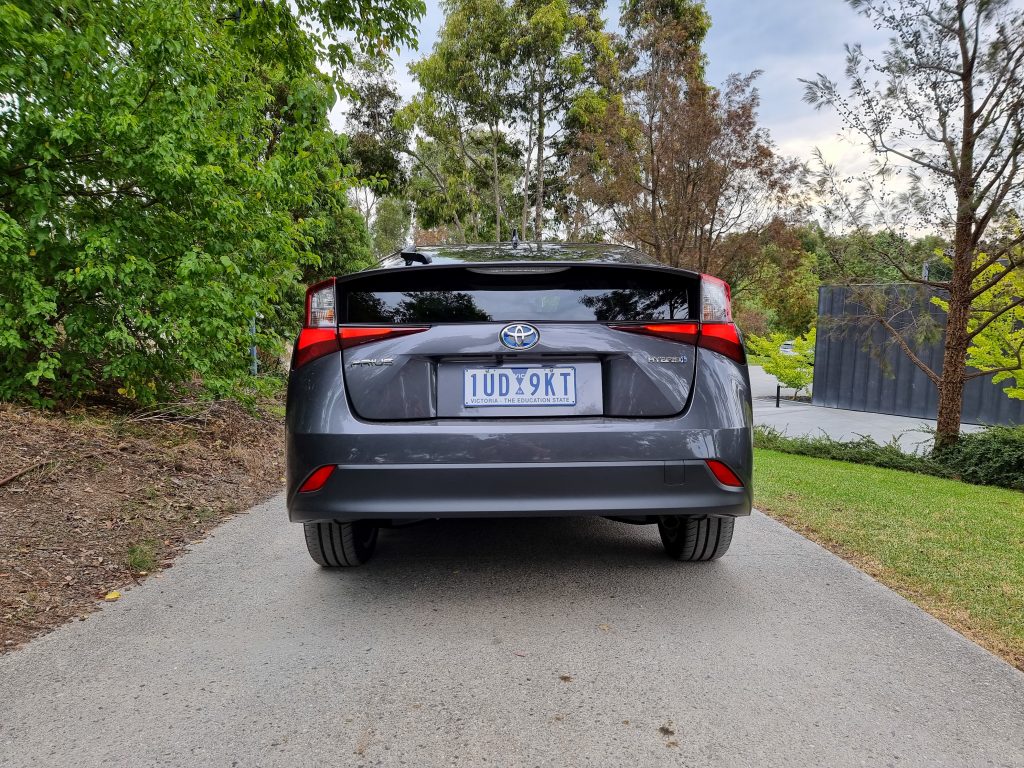
The Prius’ ride was beautifully plush, with the combination of small alloys, and long suspension travel allowing it to float smoothly over even the worst surfaces around town and in the country. Taking the Prius out of town showed it wasn’t the most refined thing in the world with quite a lot of tyre roar, but at least wind noise was well kept at bay.
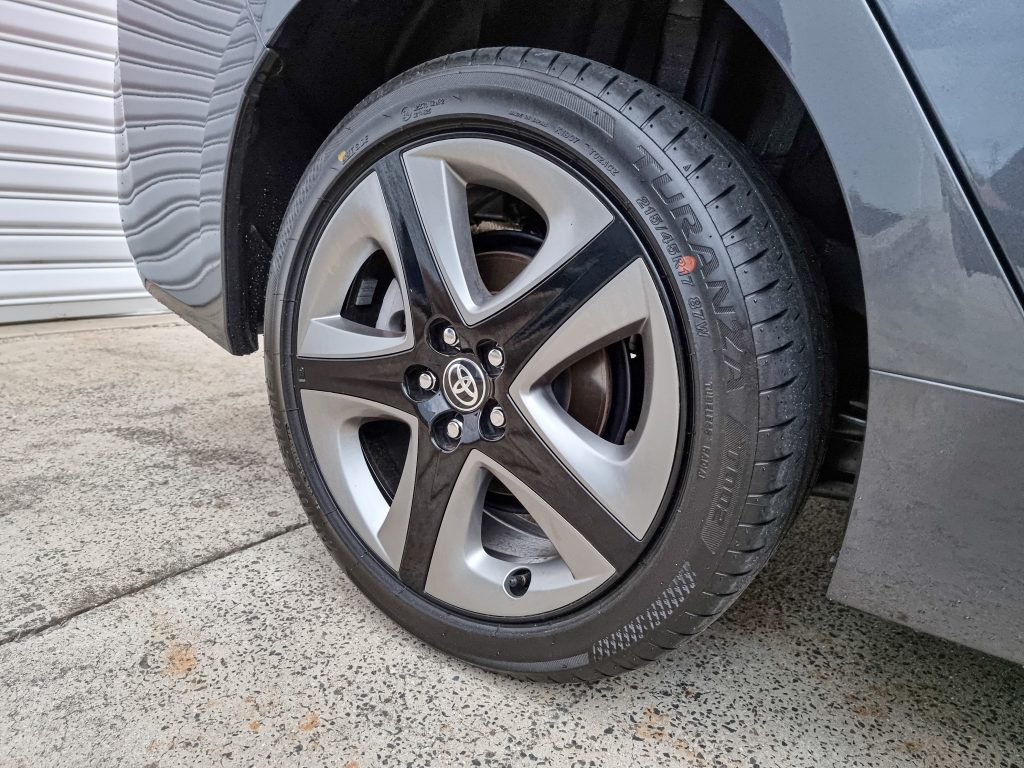
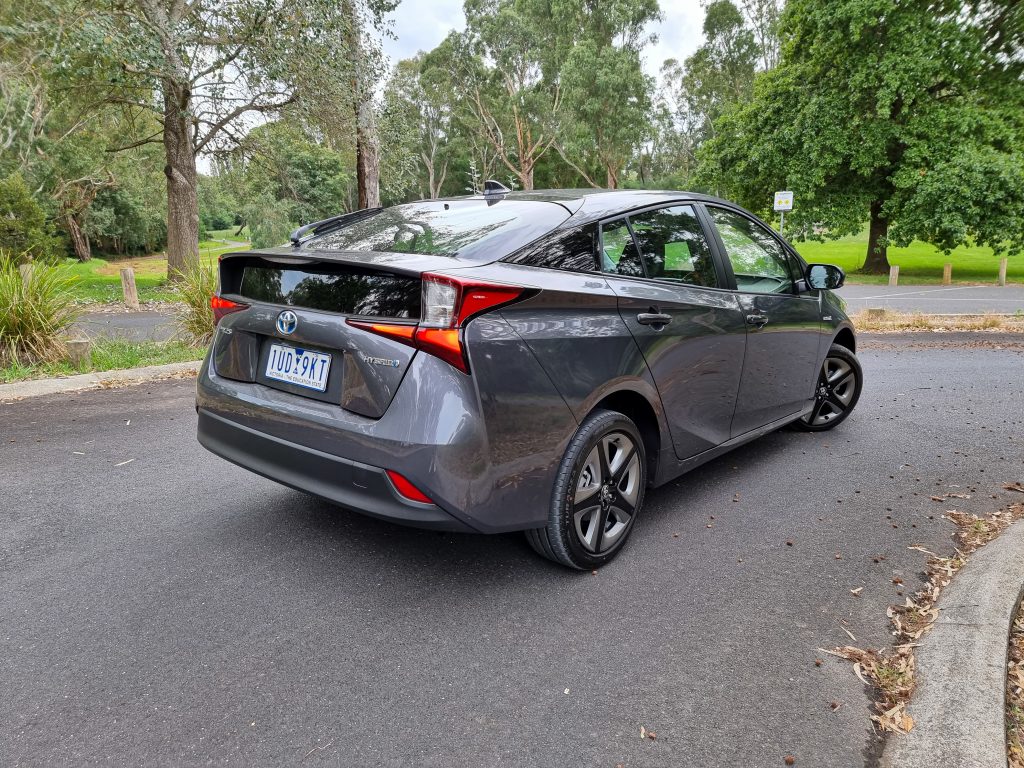
The Prius’ had some decent all-round visibility, apart from an odd two piece rear window (which helps with aerodynamics), but sadly, the rear view camera and active safety tech feels antiquated and a decade old. That’s because it almost is. When you factor in the fact that the Prius comes with a a foot operated parking brake, like an old school 90s Merc, the car was really starting to feel like a relic of an era now behind us.
Interior & Practicality: 7/10
Toyota really tried to make the Prius stand out, giving a rather flamboyant, even strange interior design. Come 2022, it felt outdated and over styled in a world of sleek screens and minimalist design. Add in the sheer massive amount of gloss black trim and this is an interior that has seen better days, even if it feels well built and up to Toyota’s usual quality standards.
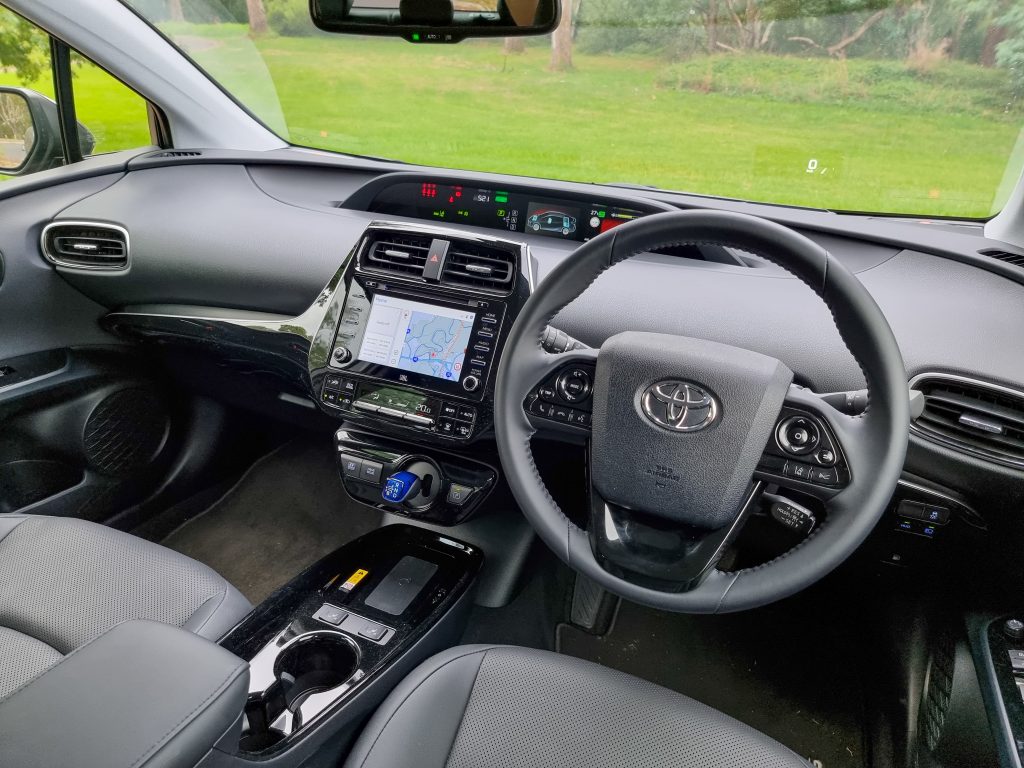
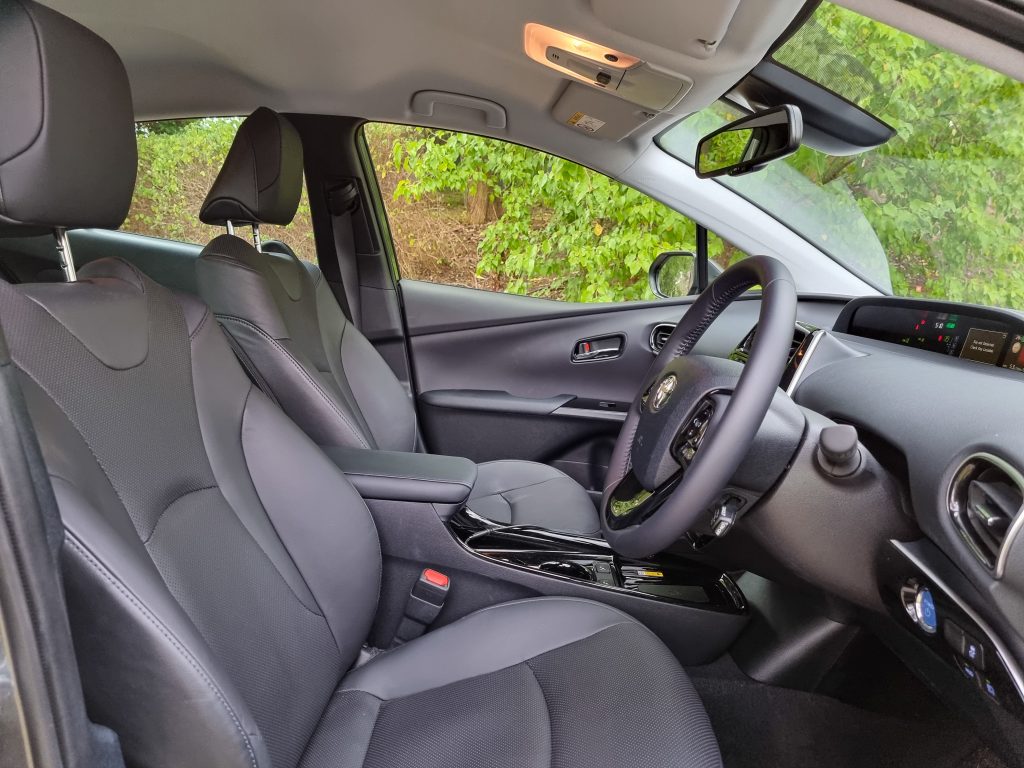
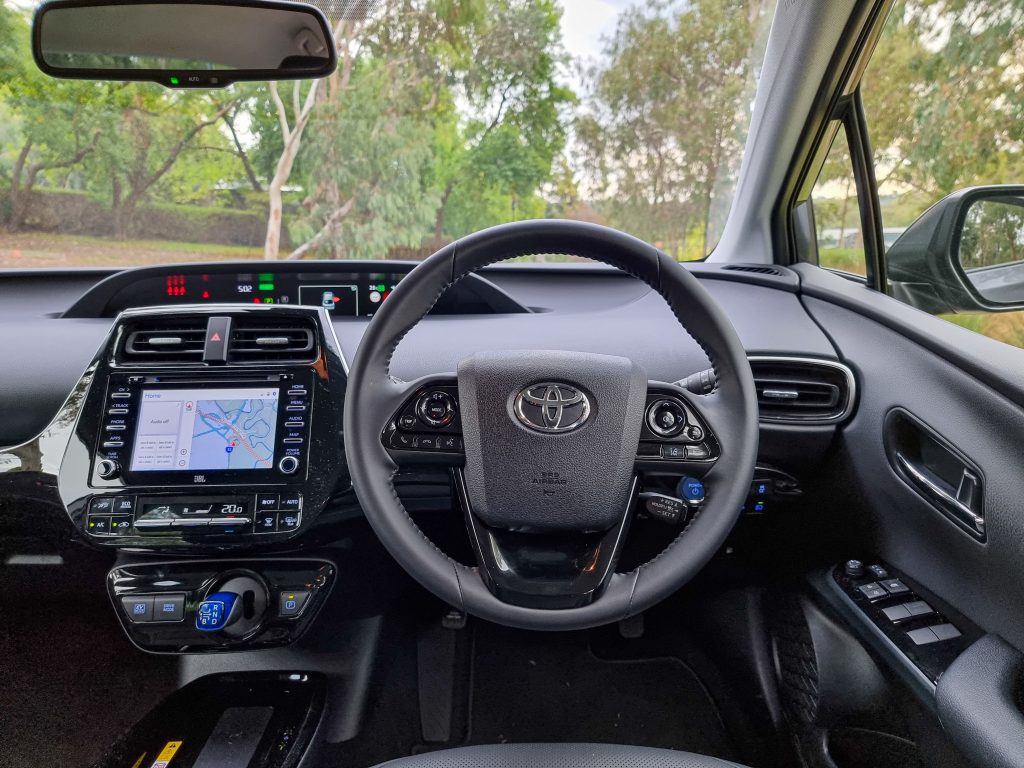
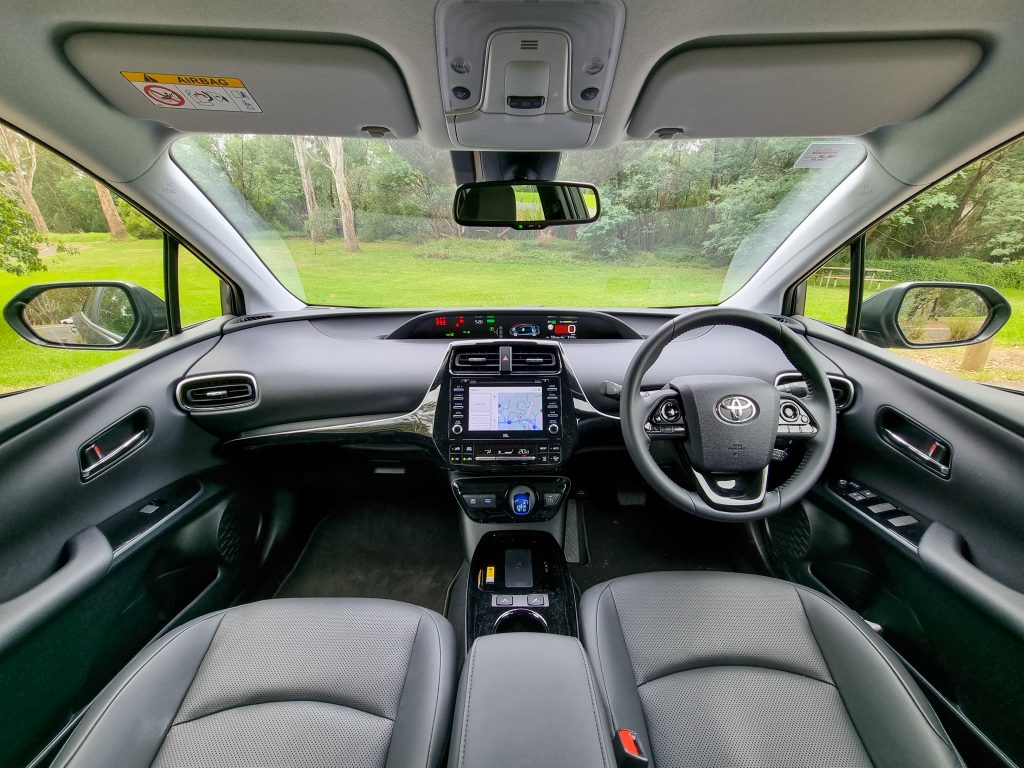
Apart from the aging design, the Prius interior handles the basics well with tons of space for all occupants and cosy seating. The front seats are lounge-like and rather flat, but driving position is much sportier than in any SUV. Storage is decent too, with large door bins and a large centre console.
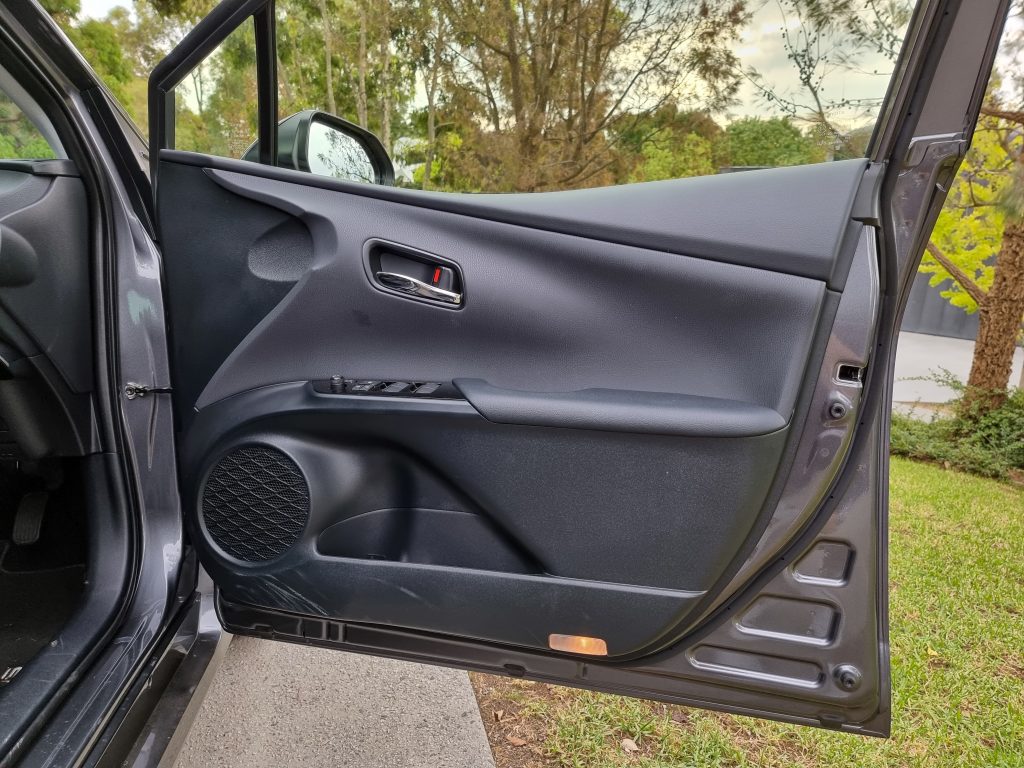
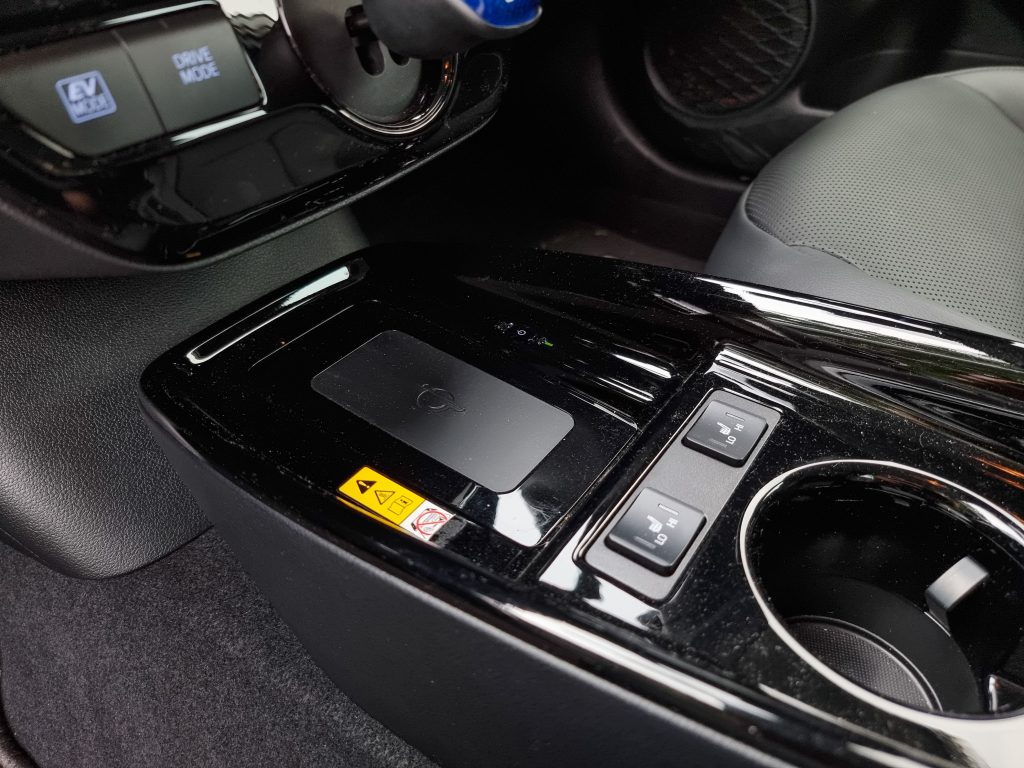
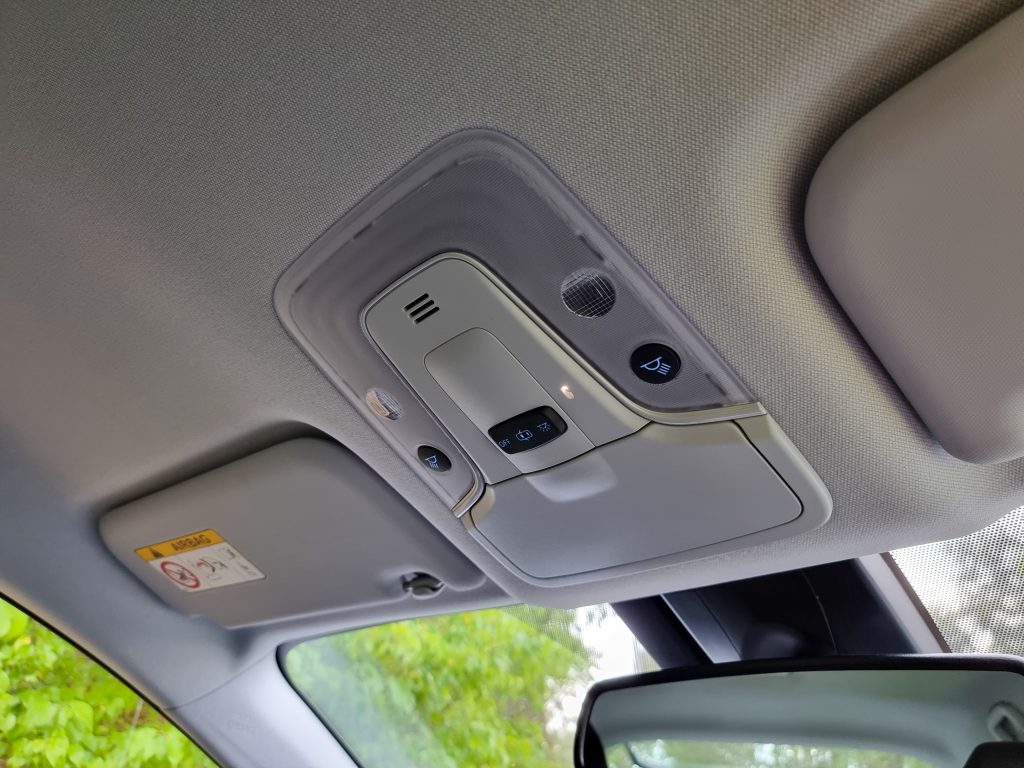
Other quirky features abound too up front with a centrally mounted holographic display showing speed and key information, little “Prius” logos on the air vents and Toyota’s now defunct wobbly gear shifter. Sadly, the 7-inch infotainment screen is both dull and not very responsive. In broad daylight it’s barely visible and is shows fingerprints and scratches very easily. Its ability to show both Apple CarPlay and Android Auto is a godsend.
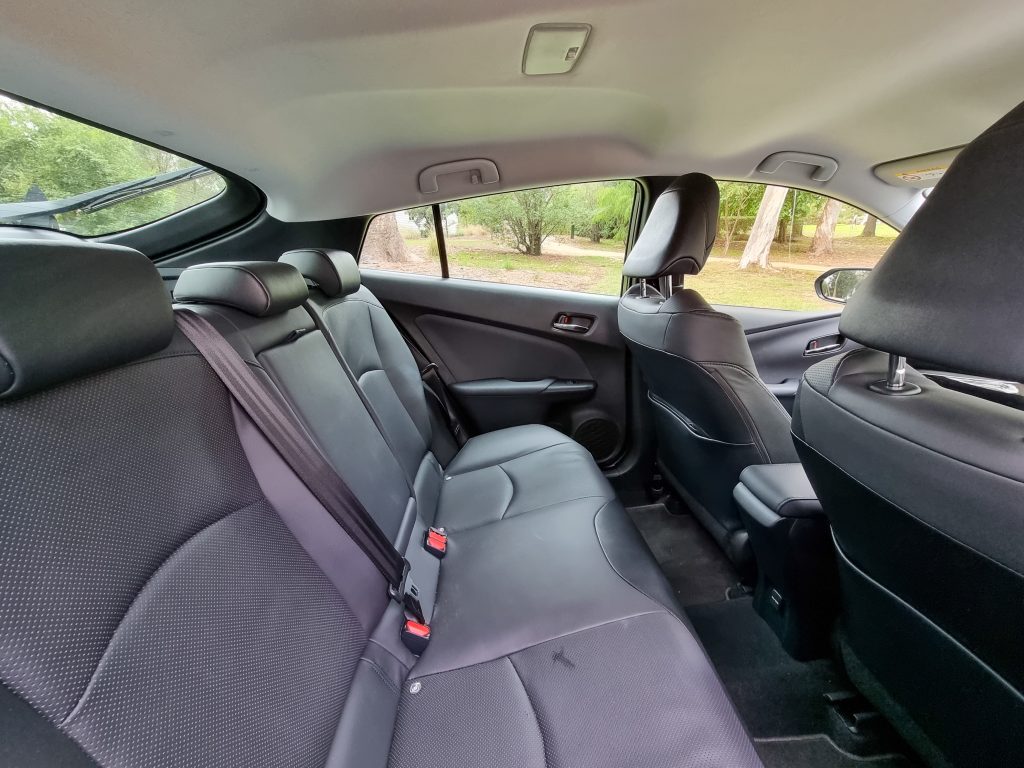
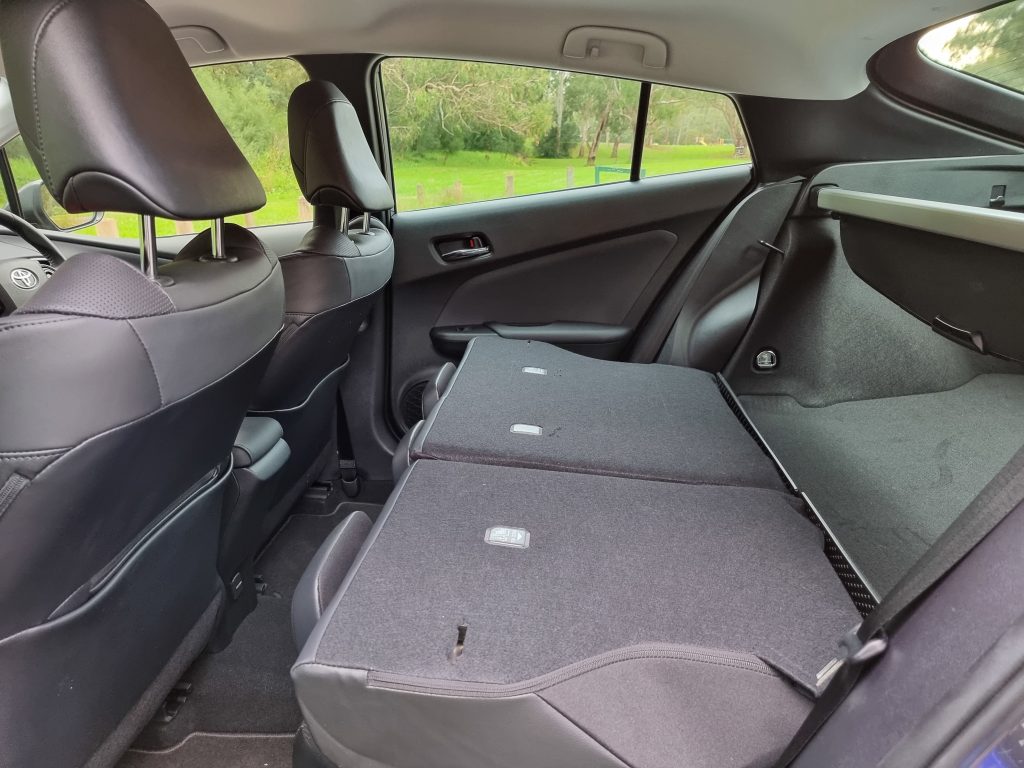
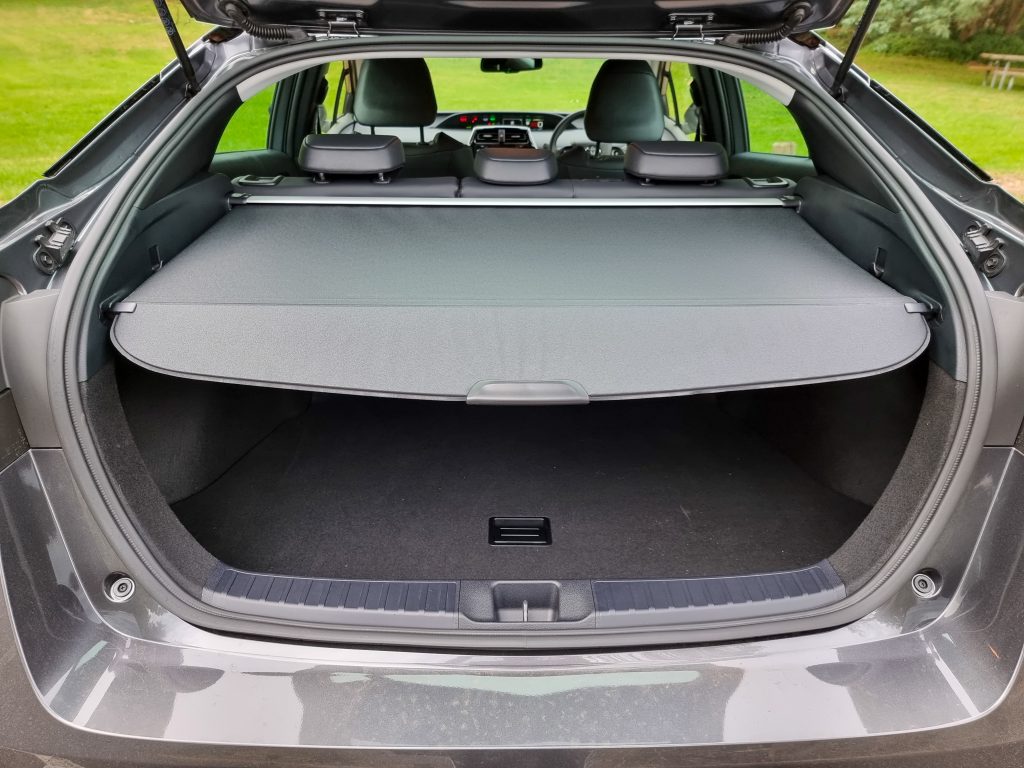
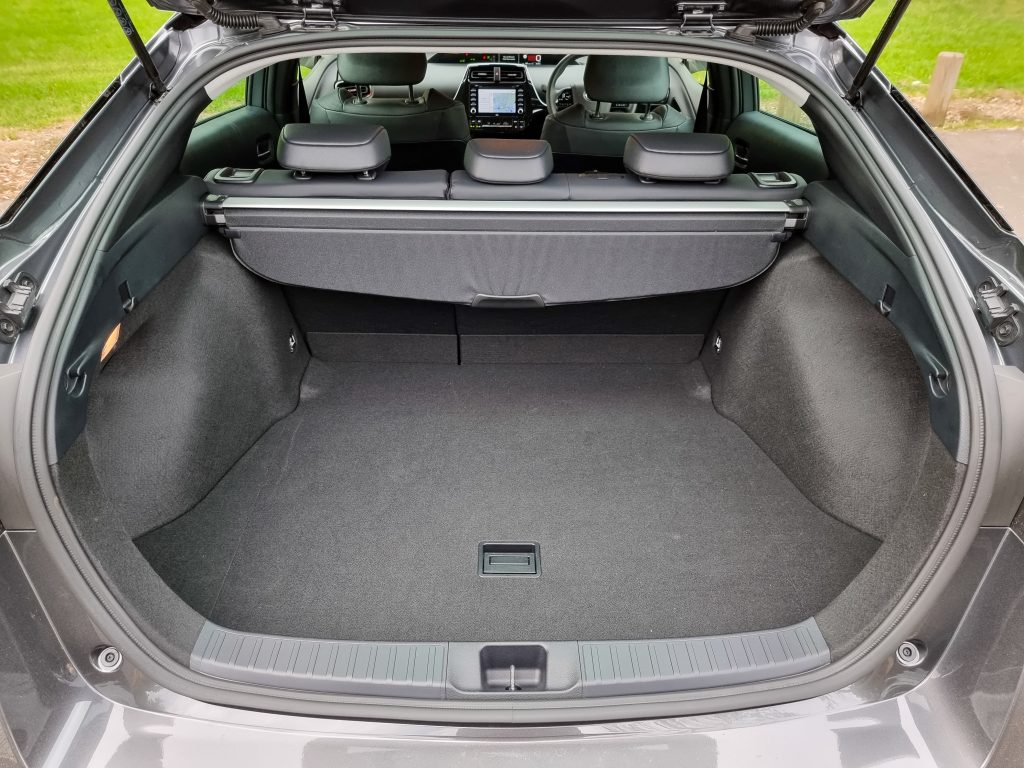
In the rear the Prius makes a great Uber car with lots of space for rear occupants, and a comfortable rear bench. Add in a relatively flat floor, and passengers seated in the rear will be reasonably happy. The boot comes with a massive 502-litres of luggage hauling capacity, much more than you’d find in a Corolla Hybrid. Sadly the Prius i-Tech doesn’t have a spare wheel, not even a space saver. You’ll find a tyre repair kit under the boot floor.
Service & Warranty: 8/10
The Toyota shares the same five-year/unlimited-kilometre warranty with the rest of the local Toyota range. Sadly, servicing is required every six months or 10,000km. That’s in stark contrast to the 12 month and 15,000km intervals offered in the RAV4 Hybrid and the Corolla Hybrid
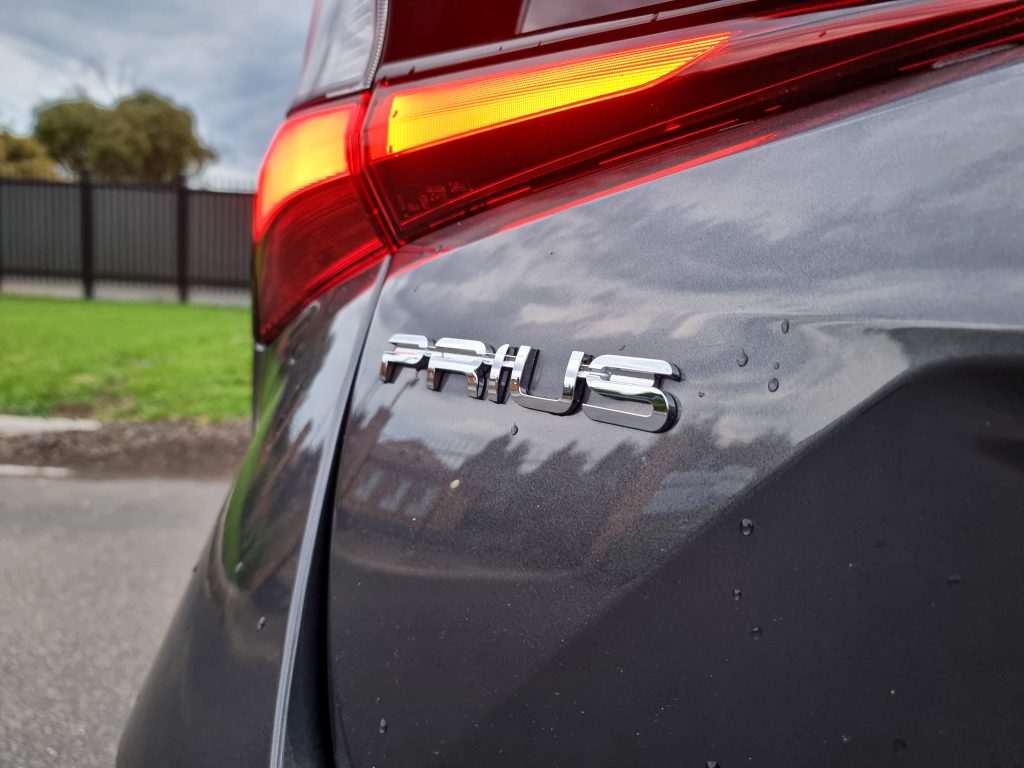
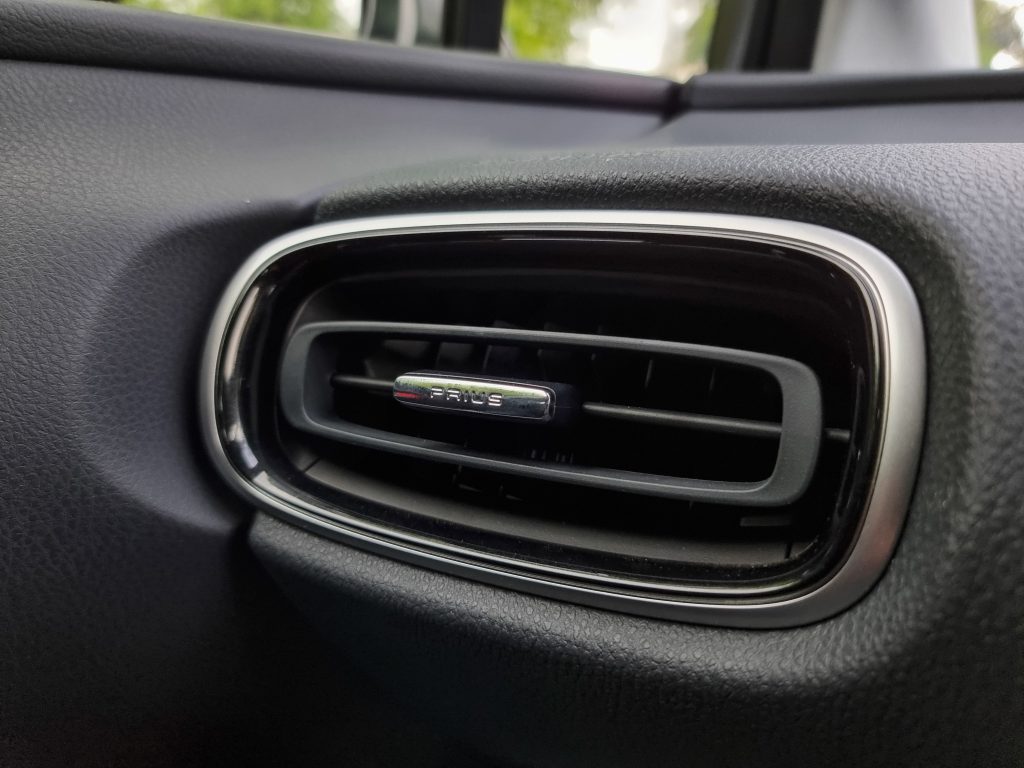
The first six services each cost $205, meaning that the cost of ownership over three years will be $1030.
2022 Toyota Prius i-Tech DiscoverAuto Rating: 7.2/10
There’s no getting around that the Prius was a trailblazer back in the day, ushering in the very notion of an eco car. The world has moved on, eco cars these days are seen as true electric vehicles and hybrids, well as the new norm. And for that, we must thank the Prius.
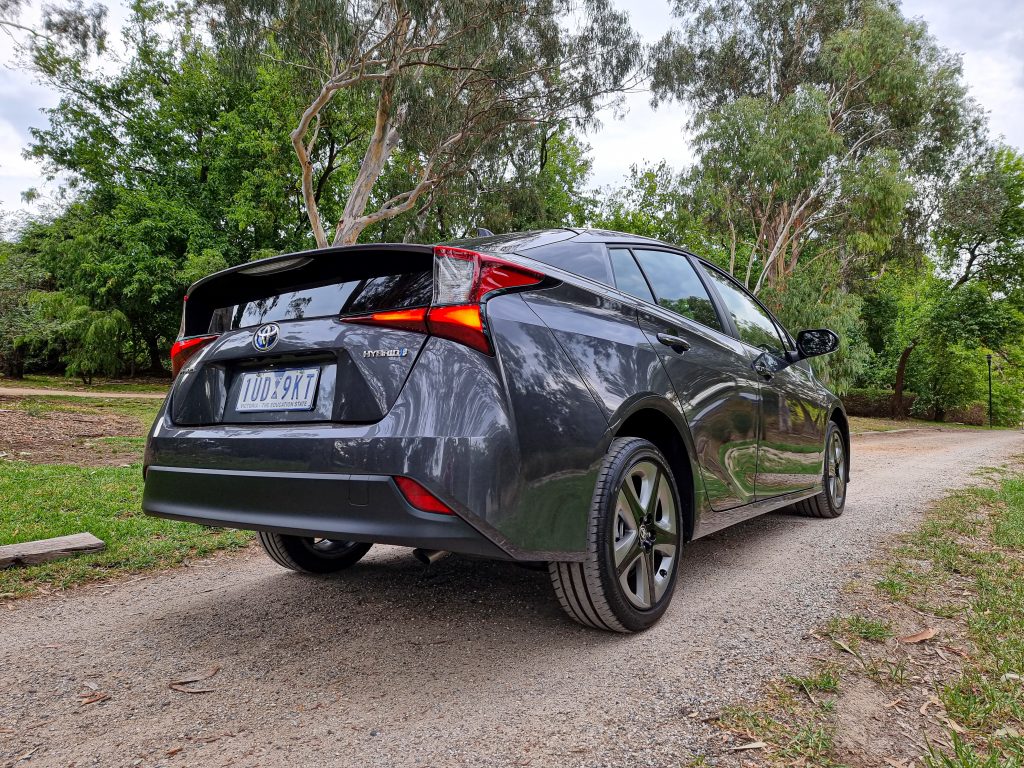
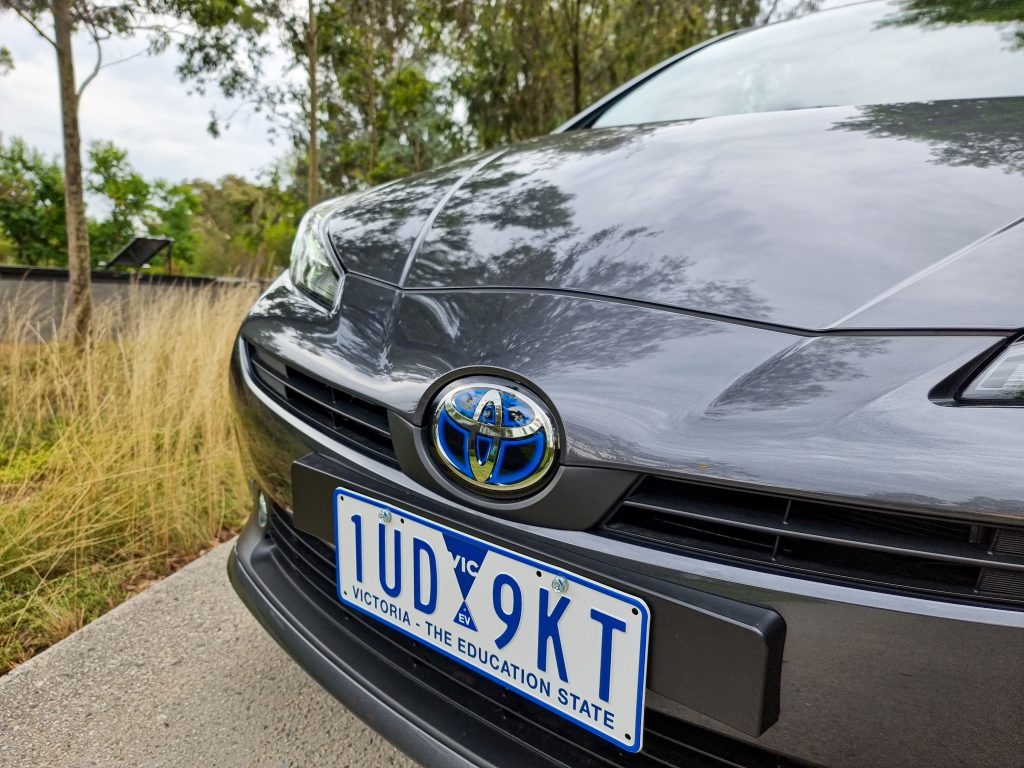
Far from the leader it once was, the Prius shaped the automotive landscape in Australia. It got us thinking about a better way to reduce emissions, as well as how to save money at the bowser. Sure it might not have a future with Toyota’s decision to kill it off, but there will be a new Prius overseas. Reports suggest that it’s a fine car, but sadly the Prius legacy will have to live on in the hybrid versions of other Toyota models. With Toyota moving from strength to strength with its hybrid models being sold out for years at a time, we can only thank the Prius for making hybrids the popular choice they are today.
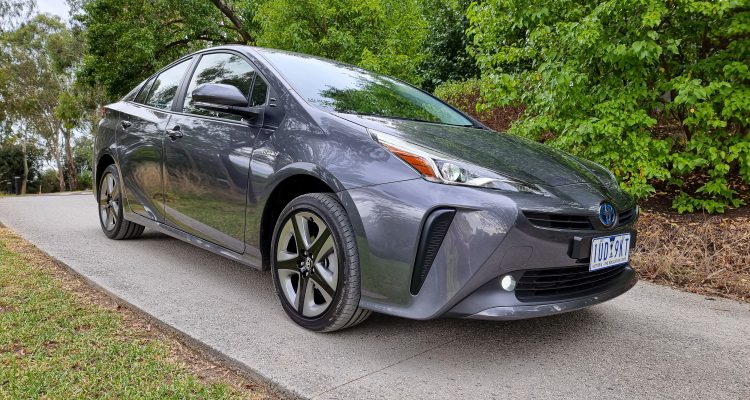
Leave a Reply